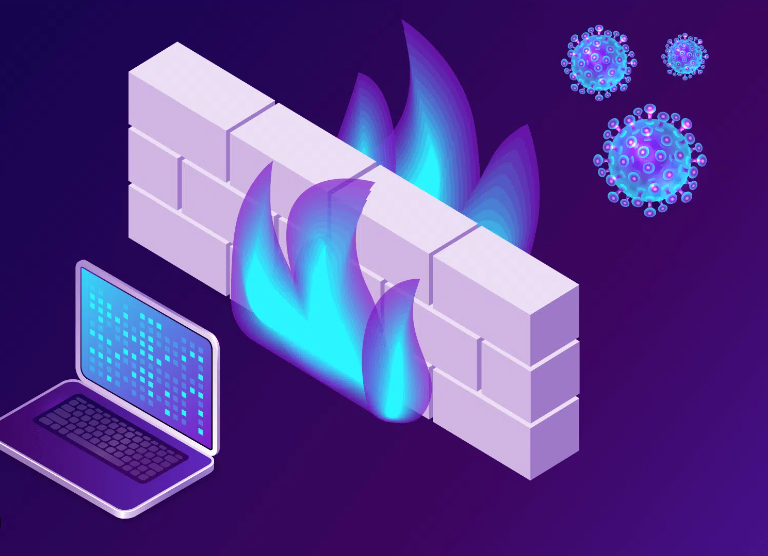
Analyzing the Effectiveness of Firewalls in Protecting Against Cyber Attacks
CYBERSECURITY


In today's digital age, where cyber threats are becoming increasingly sophisticated and prevalent, it is crucial for organizations to implement robust security measures to protect their networks and sensitive data. One such security measure is the firewall, which acts as a barrier between a trusted internal network and an untrusted external network, such as the internet. In this article, we will analyze the effectiveness of firewalls in protecting against cyber attacks.
What is a Firewall?
A firewall is a network security device that monitors and filters incoming and outgoing network traffic based on predetermined security rules. It acts as a gatekeeper, allowing or blocking traffic based on its source, destination, and type. Firewalls can be implemented as hardware appliances, software programs, or a combination of both.
The Role of Firewalls in Cybersecurity
Firewalls play a crucial role in cybersecurity by providing a first line of defense against unauthorized access and malicious activities. They serve as a barrier that helps prevent cyber attacks from reaching the internal network, protecting sensitive data and systems from potential threats.
Firewalls achieve this by employing various security mechanisms:
Packet Filtering
Packet filtering is the most basic form of firewall protection. It examines individual packets of data as they pass through the network and compares them against a set of predefined rules. If a packet matches the rules, it is allowed to pass; otherwise, it is dropped or rejected. Packet filtering firewalls can filter traffic based on source and destination IP addresses, ports, and protocols.
Stateful Inspection
Stateful inspection firewalls go beyond packet filtering by maintaining a record of the state of network connections. They keep track of the context and state of each connection, allowing them to make more informed decisions about which packets to allow or block. This helps prevent certain types of attacks, such as IP spoofing and session hijacking.
Application-Level Gateways
Application-level gateways, also known as proxy firewalls, operate at the application layer of the network stack. They act as intermediaries between the internal network and external networks, inspecting and filtering traffic at the application level. By understanding the specific protocols used by various applications, they can provide more granular control and advanced security features.
Next-Generation Firewalls
Next-generation firewalls (NGFWs) combine traditional firewall functionality with additional security features, such as intrusion prevention systems (IPS), virtual private network (VPN) support, deep packet inspection (DPI), and application awareness. NGFWs provide enhanced visibility and control over network traffic, allowing organizations to better protect against advanced threats.
The Effectiveness of Firewalls
While firewalls are an essential component of a comprehensive cybersecurity strategy, it is important to understand their limitations and the evolving nature of cyber threats. Firewalls alone cannot guarantee 100% protection against all types of cyber attacks. However, when properly configured and regularly updated, firewalls can significantly reduce the risk of unauthorized access and mitigate the impact of many common threats.
Some of the key benefits of firewalls include:
Network Segmentation
Firewalls enable network segmentation, dividing a network into smaller, isolated subnetworks. By separating different parts of the network, organizations can limit the spread of an attack and minimize the potential damage. Even if one segment is compromised, the firewall can prevent the attacker from accessing other parts of the network.
Access Control
Firewalls allow organizations to define and enforce access control policies. They can restrict access to specific ports, protocols, and IP addresses, ensuring that only authorized traffic is allowed. This helps prevent unauthorized users or malicious software from gaining entry into the network.
Logging and Monitoring
Firewalls provide logging and monitoring capabilities, allowing organizations to track and analyze network traffic. By monitoring firewall logs, organizations can detect and respond to suspicious activities, such as repeated failed login attempts or unusual patterns of traffic. This helps in identifying potential security breaches and taking appropriate actions.
Protection Against Known Threats
Firewalls can block traffic from known malicious IP addresses, domains, or URLs by leveraging threat intelligence feeds and databases. This helps in preventing attacks from known sources, reducing the risk of compromise.
Limitations of Firewalls
Despite their effectiveness, firewalls have certain limitations:
Encrypted Traffic
Firewalls have limited visibility into encrypted traffic, such as HTTPS. While they can inspect the header information, they cannot analyze the encrypted content. Attackers may exploit this limitation by using encrypted channels to bypass firewall rules and deliver malicious payloads.
Advanced Threats
Firewalls are less effective against advanced threats, such as zero-day exploits and targeted attacks. These attacks often use sophisticated techniques to evade detection and bypass traditional security measures. Organizations need to supplement their firewall defenses with advanced threat detection and response solutions.
Internal Threats
Firewalls primarily focus on external threats and may not provide sufficient protection against internal threats. Insiders with authorized access can potentially bypass firewall restrictions and misuse their privileges. Organizations should implement additional controls, such as user access controls and monitoring solutions, to mitigate internal threats.
Conclusion
In conclusion, firewalls play a vital role in protecting against cyber attacks by acting as a first line of defense. They help organizations establish network boundaries, control access, and monitor traffic. However, it is important to recognize that firewalls are not a standalone solution and should be complemented with other security measures to address the evolving threat landscape. Regular updates, proper configuration, and a comprehensive cybersecurity strategy are essential to maximize the effectiveness of firewalls in safeguarding networks and sensitive data.


